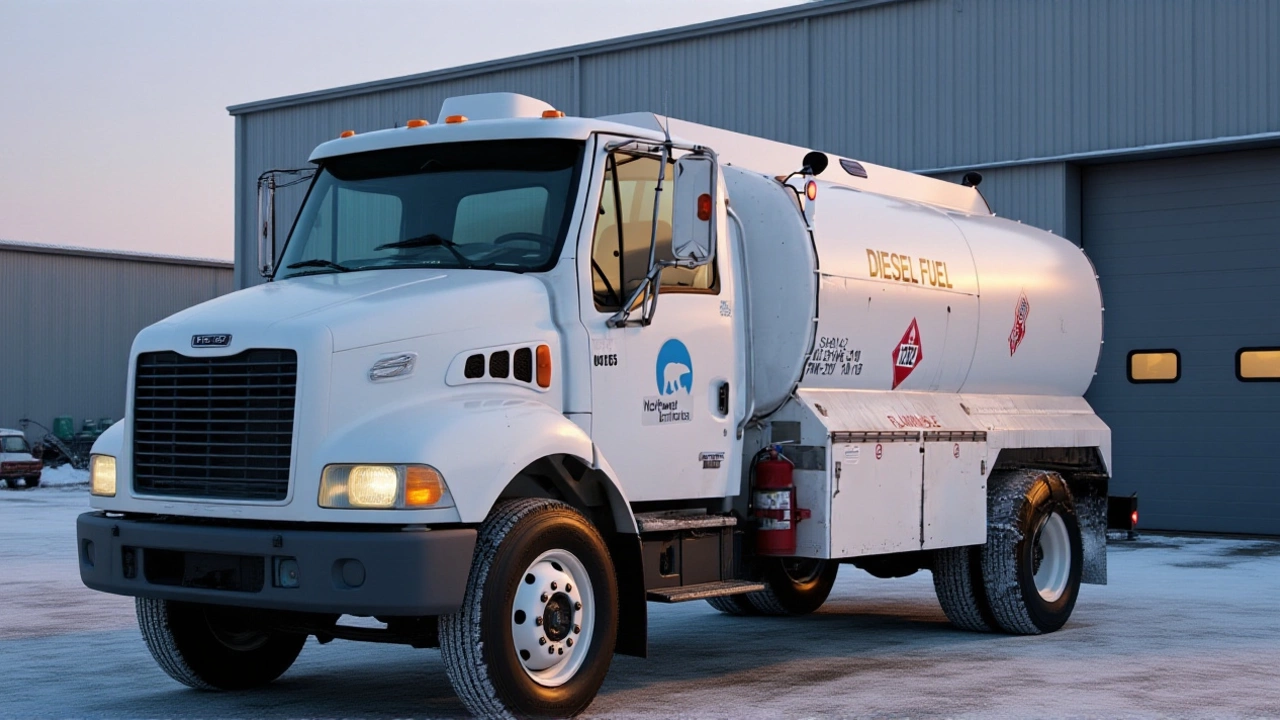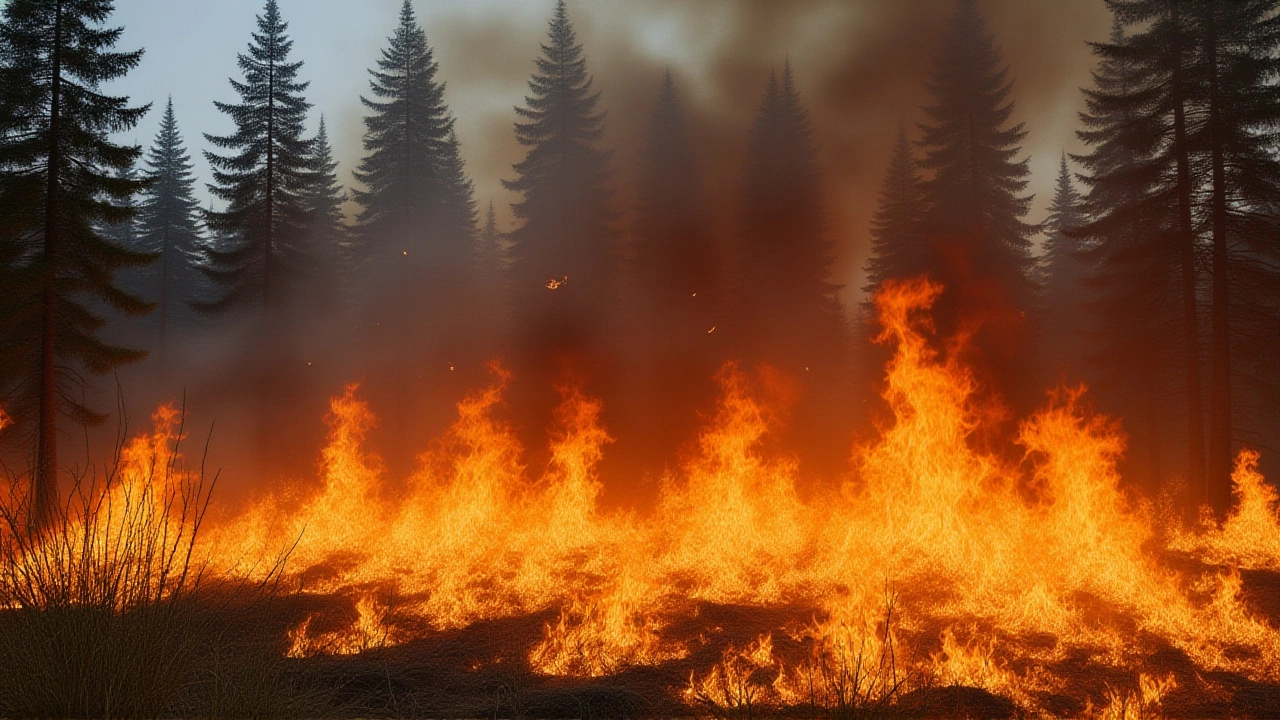MFP Resources Diesel Spill Shuts Alaska Highway Near Toad River

When MFP Resources’s fuel tanker rolled off the road on the Alaska Highway diesel spillkilometre 668 near Toad River in British Columbia, the impact rippled far beyond the asphalt.
Background and Location
The accident happened in the early morning of , at kilometre 668 of Alaska Highway (Highway 97). That stretch sits roughly 190 kilometres west of Fort Nelson, deep in the Northern Rockies region of British Columbia. The spot is notorious for harsh weather, but on that day the road was clear – until the tanker’s rear unit gave way.
Immediate Response
Within minutes, crews from Northern Rockies Fire Rescue and the Royal Canadian Mounted Police were on the scene, racing from Fort Nelson. A spokesperson for the RCMP, Officer Mark Daniels, later told reporters, “We treated this as an urgent environmental emergency – every second counts when diesel meets water.”
The provincial Environmental Emergency Branch dispatched an Environmental Emergency Response Officer, who began a rapid‑assessment of the spill’s reach. The incident was logged under designation DGIR: 251388.
Scope of the Spill
Preliminary estimates put the volume between 7,000 and 13,000 litres. One government source initially cited up to 10,000 litres, though that figure remains unconfirmed. What’s clear is that the diesel didn’t stay confined to the pavement – a portion seeped into a small creek that drains into the Toad River, raising alarms about downstream contamination.
- Location: kilometre 668, Alaska Highway
- Estimated volume: 7,000‑13,000 L
- Affected waterway: creek → Toad River
- Response agencies: Northern Rockies Fire Rescue, RCMP, Environmental Emergency Branch, MFP Resources
- Road status: closed, then single‑lane alternating traffic

Cleanup Operations
Cleanup crews took a multi‑pronged approach. First, they bermed the highway to stop further runoff. Then, absorbent booms were floated into the creek, acting like giant sponges to soak up diesel slicks. A vacuum truck, pulled in from Fort Nelson, sucked the fuel off the road surface, while handheld pumps tackled pockets of seepage along the shoulder.
“We’re treating the spill like a controlled burn, but with absorbents and suction,” explained Emily Chen, a senior environmental technician with MFP Resources. “Our priority is to get the diesel out of the water before it reaches the Toad River proper.”
By Tuesday morning, , the highway had been reopened to alternating traffic – one lane at a time – while crews continued to monitor water quality downstream.
Traffic Impact and Road Closure
Initially, the Alaska Highway between Fort Nelson and the Liard River was shut in both directions. DriveBC posted the closure, and drivers faced detours that added up to 60 kilometres to their journeys. The single‑lane alternation that began on April 8 allowed limited traffic flow, but the bottleneck persisted for several days as cleanup progressed.
Local truckers expressed frustration. “We’re used to long hauls, but this forced us to stop for hours. The guys from Fire Rescue kept us updated, which helped,” said a regular driver who asked to remain anonymous.

Environmental Concerns
Diesel in freshwater can be toxic to fish and macro‑invertebrates, especially in cold mountain streams where oxygen levels are already low. The Environmental Emergency Branch cited past incidents where diesel concentrations above 5 mg/L caused fish kills. Monitoring teams installed portable water‑quality meters at three points along the creek, checking for total petroleum hydrocarbons (TPH) and dissolved oxygen.
Preliminary readings showed TPH levels at 12 mg/L near the spill site, dropping to 3 mg/L three kilometres downstream. While not yet at lethal thresholds, the numbers signal a need for continued observation. The Branch plans a follow‑up assessment on April 15 to determine if further remediation, such as bioremediation mats, will be required.
Looking Ahead
Authorities have launched an investigation into the cause of the tanker’s rear‑unit failure. Early speculation points to a possible brake‑line rupture, but the final report won’t be released until a full forensic analysis is complete.
In the meantime, MFP Resources has pledged to review its fleet safety protocols and to increase driver training across its western Canada routes. “We take full responsibility for the spill and are committed to preventing a repeat,” said company CEO David Harper in a press statement.
For the residents of Fort Nelson and the broader Northern Rockies, the incident is a stark reminder of the fragile balance between resource transport and environmental stewardship. As cleanup crews finish their work, the hope is that the creek—and the Toad River beyond—will return to its natural state without lasting harm.
Frequently Asked Questions
How many litres of diesel were actually spilled?
Officials estimate the spill between 7,000 and 13,000 litres. The initial figure of 10,000 litres was a rough early guess and remains unverified.
What immediate actions were taken to protect the Toad River?
Responders placed absorbent booms in the creek, bermed the highway to stop runoff, and deployed a vacuum truck to remove diesel from the road before it could reach the waterway.
Will the spill have long‑term effects on local wildlife?
Early water‑quality tests show petroleum hydrocarbon levels above background but below lethal thresholds for fish. Ongoing monitoring will determine if additional remediation is needed to protect aquatic life.
Why was the Alaska Highway closed, and when did it reopen?
The highway was shut in both directions on April 7 to allow safe containment and cleanup. It reopened to single‑lane alternating traffic on the morning of April 8, with full reopening pending completion of remediation work.
What steps is MFP Resources taking to prevent future incidents?
MFP Resources announced a review of its fleet safety standards, additional driver training, and stricter maintenance checks for tanker units operating in remote northern routes.